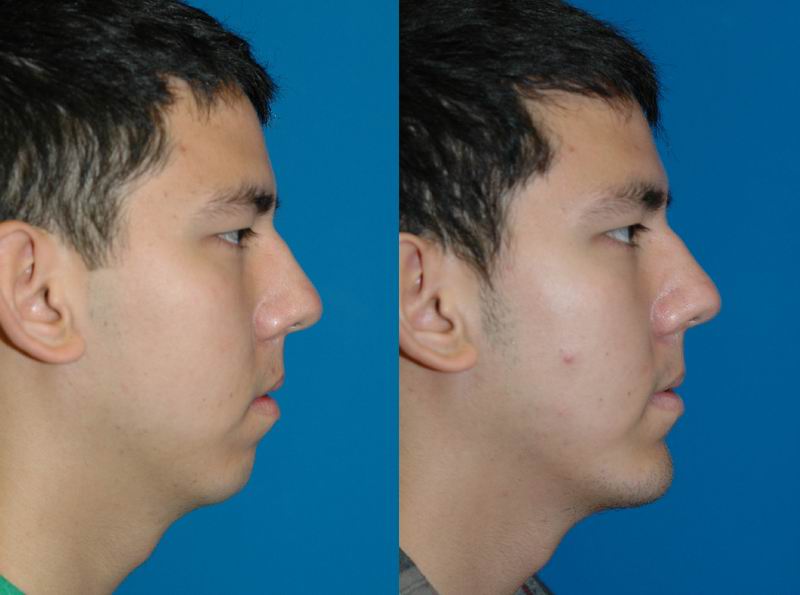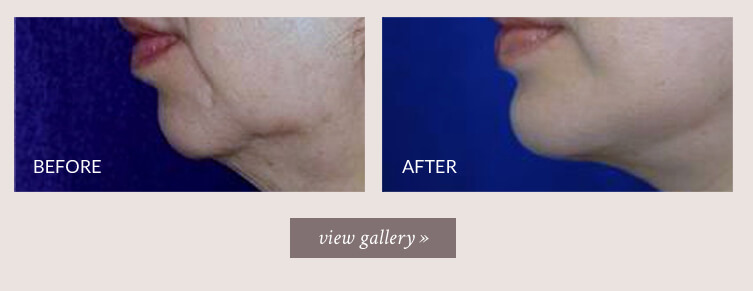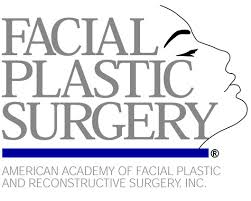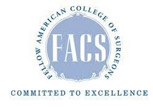Chin Implant
Chin implants often produce some of the most dramatic and gratifying outcomes in facial plastic surgery, yet most people who could benefit from a chin implant are not aware of the fact that they could use one. The goal of a chin augmentation procedure is to balance the profile by enhancing a weak chin and improving overall facial harmony. A weak chin will accentuate the middle portion of the face often making the profile appear 'bird-like' and pointy. A weak chin can also make an otherwise normal sized nose appear too large and overprojected. A weak chin will also create a weak jawline and can make the lower face appear jowly or the neck appear too fat. Chin augmentation is accomplished by placing a synthetic chin implant over the bony chin to improve the balance between the chin and the rest of the face. The chin implant sits directly on the top of the bone and feels like an extension of the bone itself.
The result of a chin implant can at times be very subtle, such as in the example below, where there is just a slight strengthening of the lower jaw. In this example, a relativey small sized chin implant was used.
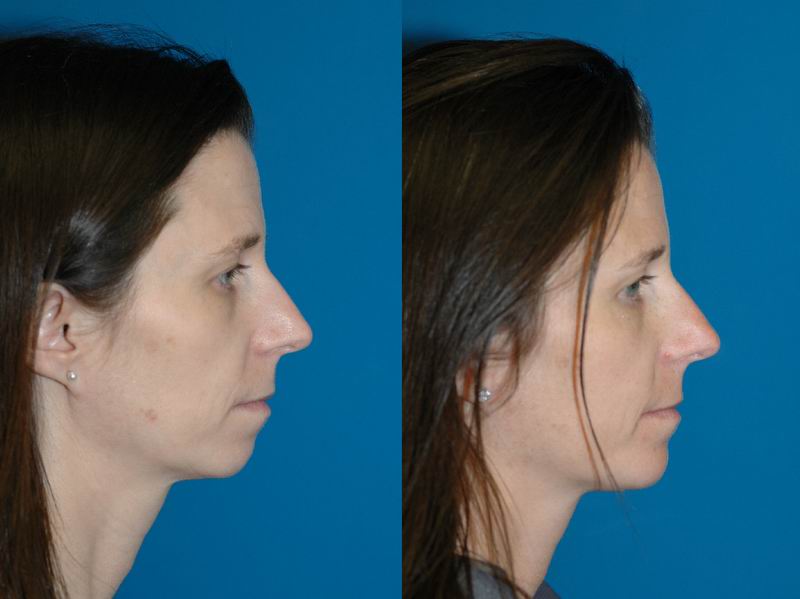
Chin implant by Dr. Sam Naficy. * Individual results may vary.
In other circumstances, the result of a chin implant can be quite dramatic, such as in the example below, where a larger sized implant was used to achieve the proper balance.
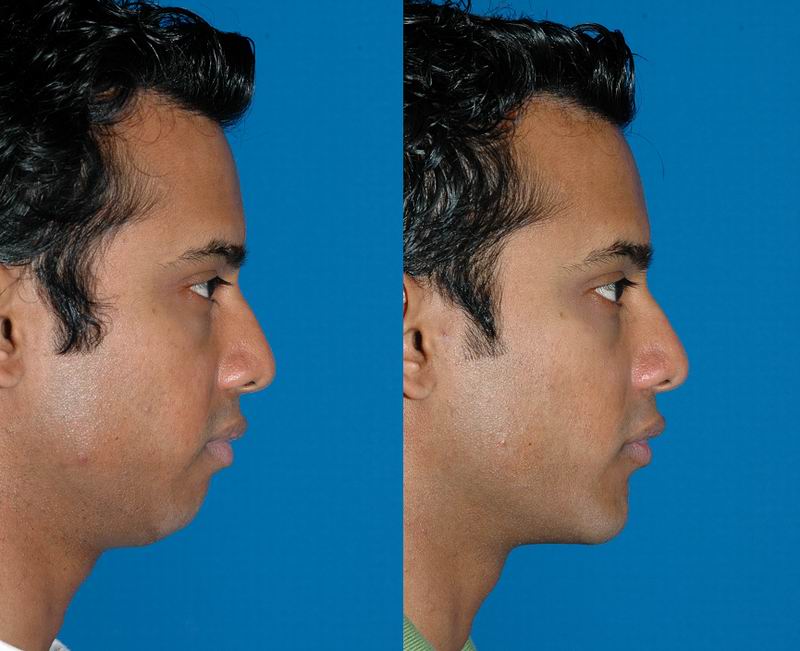
Chin implant by Dr. Sam Naficy. * Individual results may vary.
What about liposuction and chin implant at the same time?
Chin implant and neck liposuction are very common procedures to combine at the same session. Both procedures are done through the same small incision under the chin and the two procedures tend to complement each other.
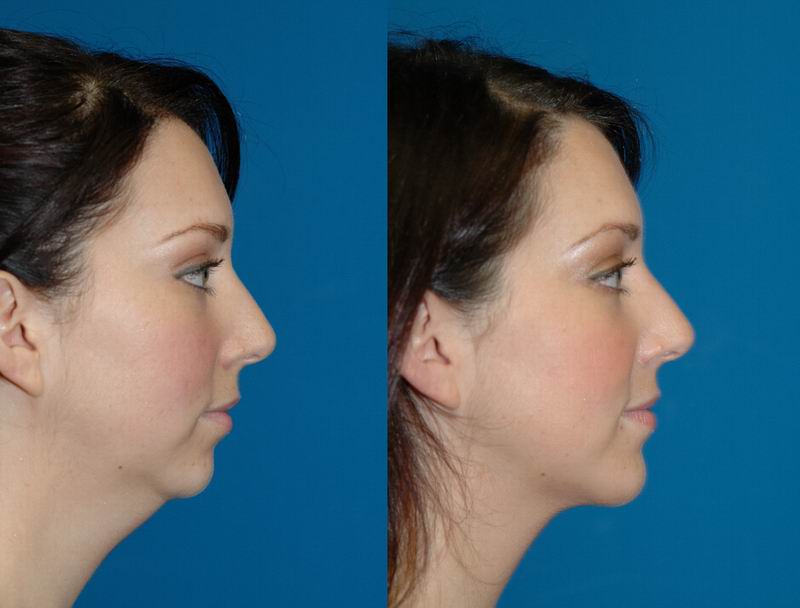
Chin implant and neck liposuction by Dr. Sam Naficy. * Individual results may vary.
Rhinoplasty and chin implants are also a perfect match!
Chin implants and rhinoplasty are also often performed together at the same time and work in harmony very well to help enhance the profile. Chin implants are especially useful in situations where the nose is long (overprojected, or sticks out too much) by balancing the face and helping make the profile of the nose appear even better
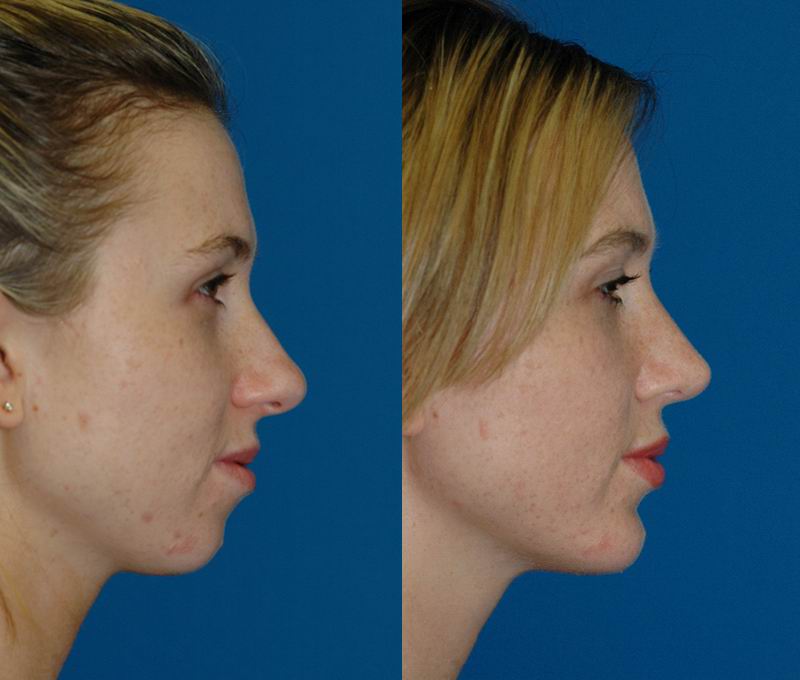
Chin implant and rhinoplasty by Sam Naficy, MD. * Individual results may vary.
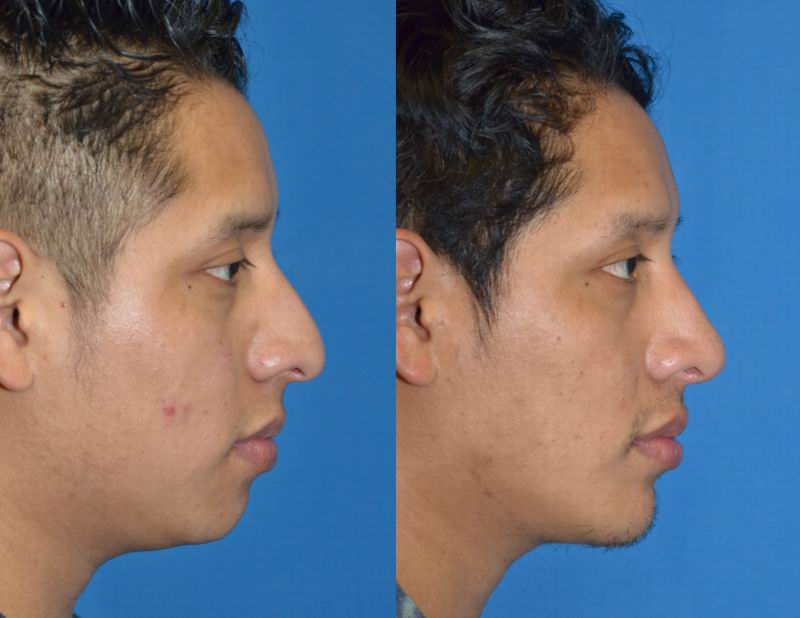
Chin implant and rhinoplasty by Sam Naficy, MD. * Individual results may vary.
Chin implants and Face lifts
Chin implants and face lifts are also a very popular combination for a number of reasons. One reason is that a stronger jawline helps make the result of a facelift look even better by creating a more defined jawline. The second reason is that the incision used for a chin implant is typically already needed for a face lift, so its a good time to do both at the same time.
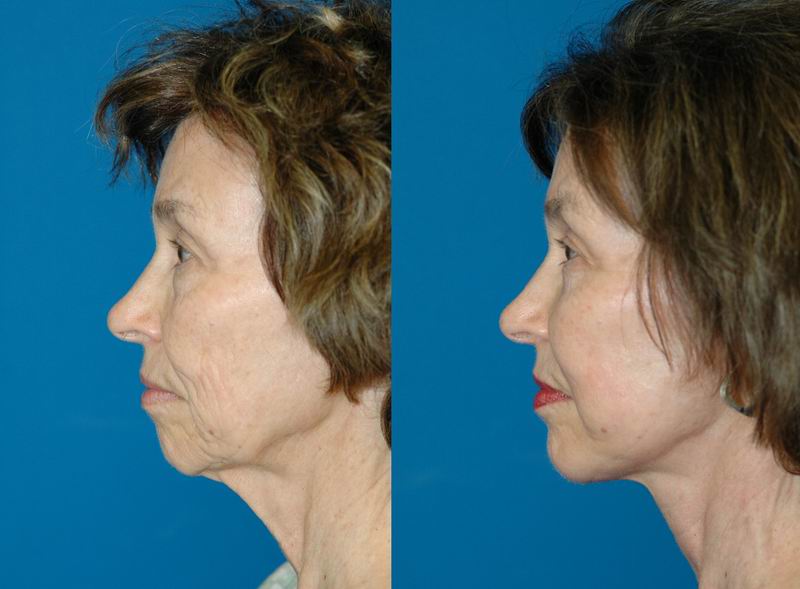
Chin implant, Face lift, and Fat grafting by Sam Naficy, MD. * Individual results may vary.
Chin implants in Asian patients
Asians in general tend to have a higher incidence of weak chins. As a result chin implants are a very popular procedure among Asian men and women both in the US and overseas in Asia.
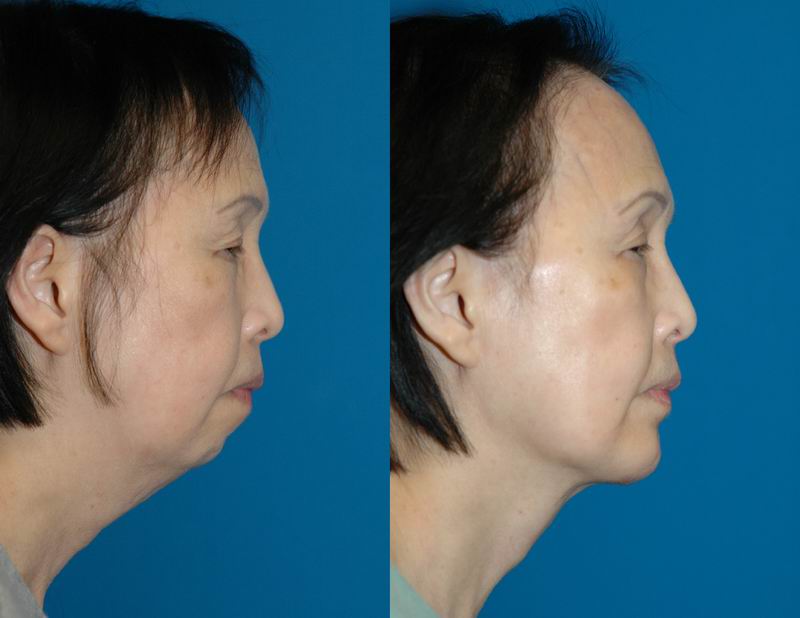
Chin implant in an Asian woman by Sam Naficy, MD. * Individual results may vary.
Chin implant in an Asian man by Sam Naficy, MD. * Individual results may vary.
How does a chin implant change the way you look from the front?
The short answer is for the better! In general people with weak chins tend to have a cheeky (fuller face) appearance from the front view. After a chin implant the front view tends to look less chubby (cheeky) and more defined.
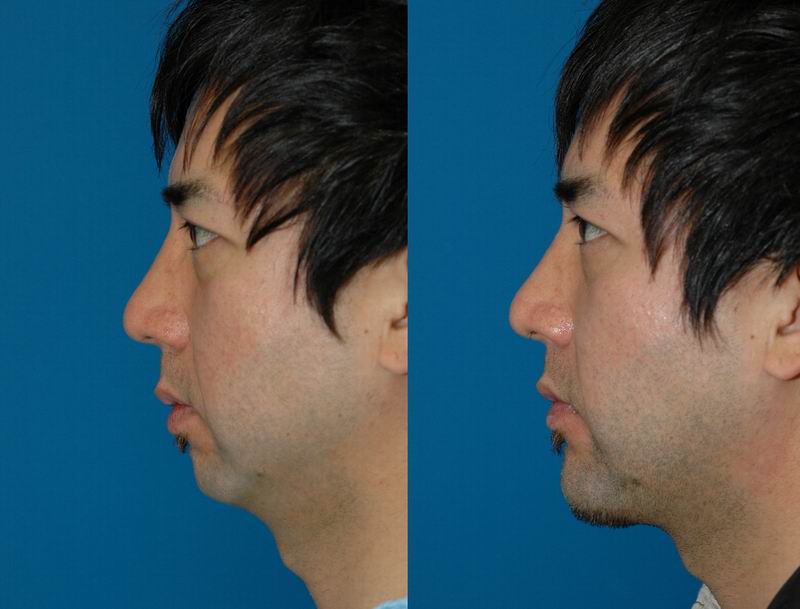
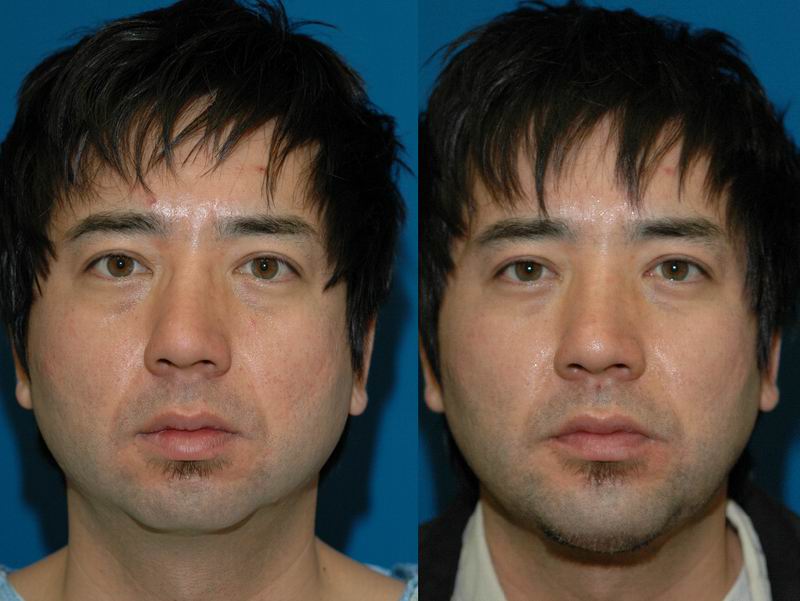
Chin implant in an Asian man by Sam Naficy, MD. * Individual results may vary.
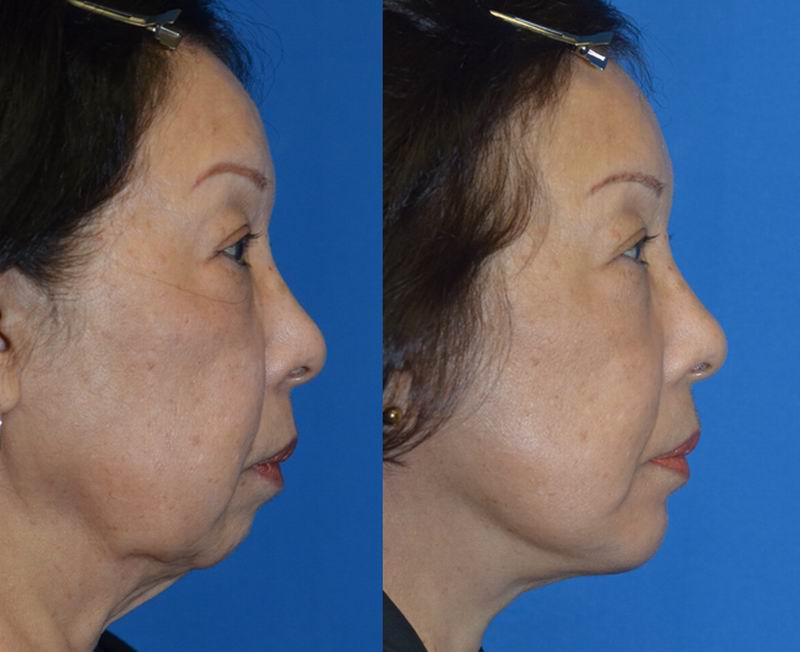
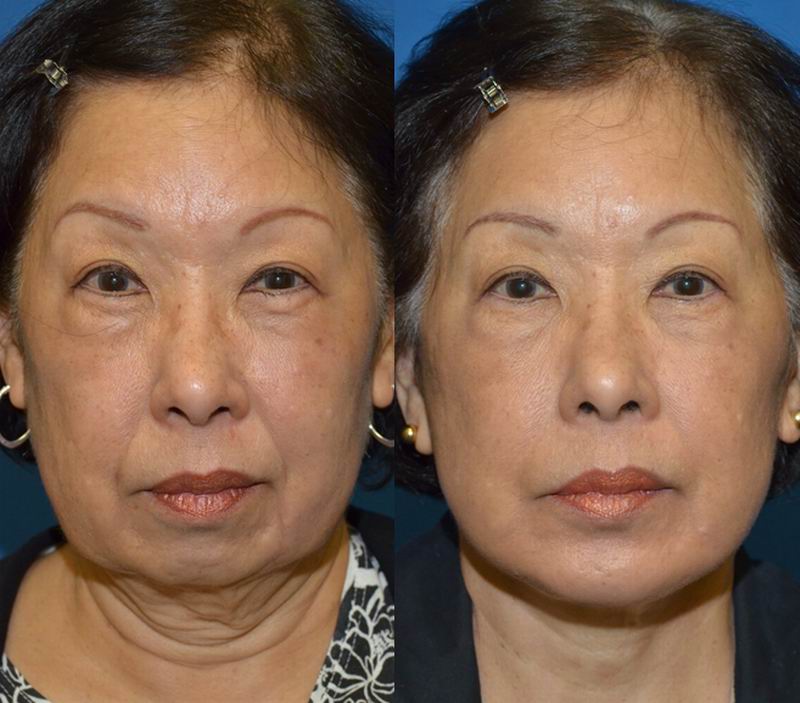
Chin implant and face lift in an Asian woman by Sam Naficy, MD. * Individual results may vary.
Chin Augmentation Photo Gallery
You may wish to browse through the gallery of representative before and after chin augmentation pictures. Click on any of the thumbnails to enter the slide show. All procedures were performed by Dr. Sam Naficy and some patients may have had more than one surgical procedure performed. The text accompanying the photos describes the details of the procedures performed.
* Individual results may vary.
What material is used for chin implants?
The materials of choice for chin implants are Silastic (medical-grade silicone rubber) and Gore-Tex. Because chin implants rest directly on top of bone, they feel as if they were part of the bone itself. Chin implants are stable over time and do not reabsorb so the results are permanent. Another technique of chin augmentation involves cutting the lower jawbone and sliding it forward. This is called a sliding genioplasty. This is a more invasive technique with greater risks and is not Dr. Naficy's preferred technique. As an alternative to a chin implant, fat injections may be used to augment the chin, although the fat will disappear over time.
Can fillers produce the same result as a chin implant?
The short answer is no. Fillers are good replacements for soft tissue but not for bone. Fillers, being soft and moldable, can make the chin appear more 'fat' and don't provide the same enhancement of the bony contour that solid and rigid chin implants can provide. Fillers can also be quite expensive as it can take multiple syringes of filler to contour a chin, and the results being temporary.
What type of incision is used?
The implant is typically placed using a small incision under the chin. There is usually a natural crease under the chin that allows for camouflage of the small incision. Alternatively, an incision can be made inside the mouth, between the gum and the lip.
What type of anesthesia is used?
A number of anesthesia options are available and your anesthesia provider will discuss with you which one is most appropriate for your health status and procedure. Some procedures require general anesthesia, while others may be done with IV sedation. With either, your heart rate, blood pressure, breathing and oxygen levels are monitored continuously by your anesthesia provider.
General anesthesia means that you are completely asleep for surgery and the placement of an intravenous line and a breathing tube is required. Frequently, numbing medication is also placed during surgery by your surgeon.
IV sedation is also called “monitored anesthesia care” or MAC. This involves receiving sedation and pain medication through an intravenous line (IV). At the beginning of the procedure, when you will be the sleepiest, your surgeon will be placing numbing medication in the area of the surgery. Once the area is numb you will require less sedation and pain medication but you will continue to receive enough medication to keep you sedated and comfortable during the entire procedure. During your surgery you may be receiving oxygen. Airway devices may be placed during IV sedation to keep you breathing normally.
Anesthesia guidelines [21kb PDF]
What is the recovery like?
There is some discomfort after the surgery for which medication is prescribed. A pressure dressing is placed overnight but typically nothing else needs to be worn afterwards. Swelling around the chin will gradually subside and allow return to work and social activities. It is recommended to avoid chewing hard foods for about a week.
Post-operative care instructions [12kb PDF]
I am interested! What do I do next?
If you are considering this procedure we encourage you to complete this Surgical Consultation Intake Form. Dr. Naficy will tell you whether you are a suitable candidate for this procedure and inform you of the potential risks of the procedure. There is great variety in features of the chin, neck, and lower jaw so that each procedure must be custom tailored for the best possible result. You will also have a chance to view before and after photo albums of his patients who have undergone procedures similar to what you are considering.


